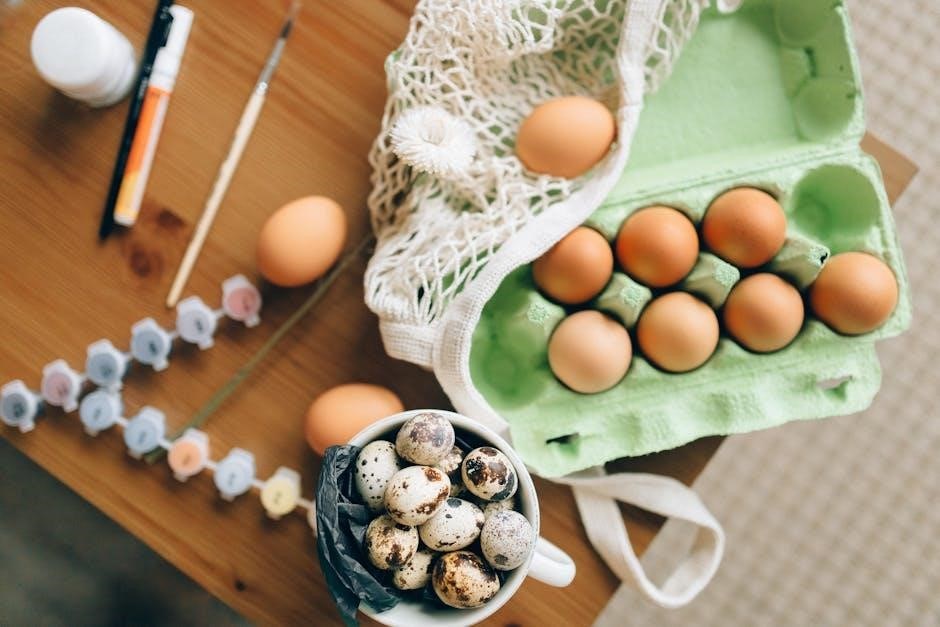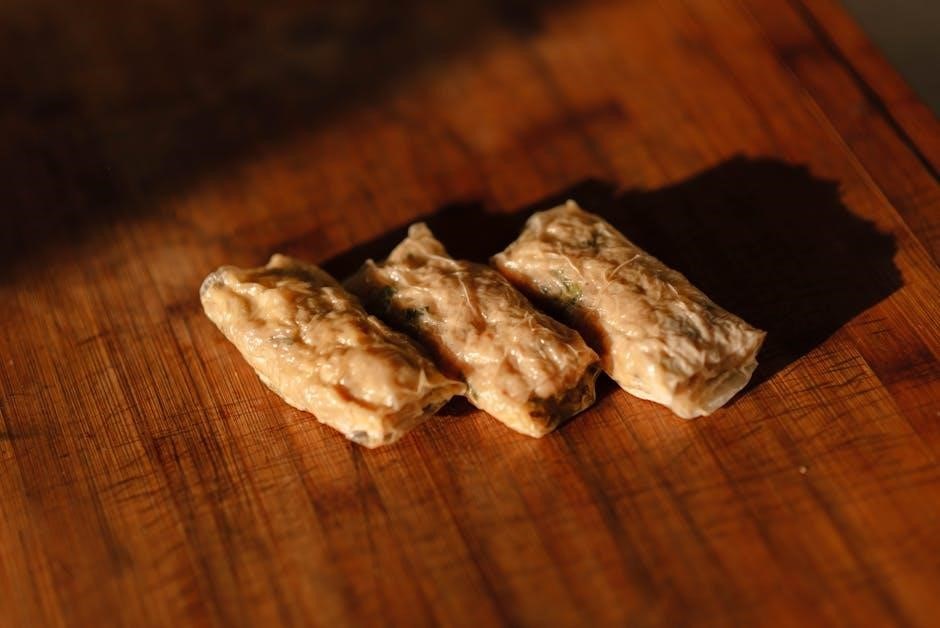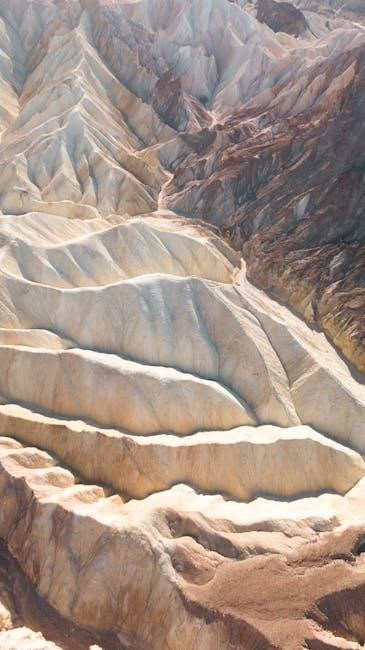Costco spring rolls are a convenient and delicious option, offering a crispy texture and versatile flavors. This guide provides easy cooking methods and expert tips for perfect results every time.
Overview of Costco Spring Rolls
Costco spring rolls, such as the Vegetable Spring Rolls from Royal Asia, are a popular frozen convenience food. They feature a light, crunchy pastry wrapper filled with ingredients like jicama and edamame, offering a delicious and versatile snack or appetizer. These rolls are designed to be easily cooked at home, providing a crispy texture when prepared correctly. They come with dipping sauces, such as ginger and soy, enhancing their flavor profile. Available in the freezer section, Costco spring rolls are a quick and tasty option for busy households, perfect for snacks, meals, or entertaining guests.
Importance of Proper Cooking Instructions
Proper cooking instructions are essential for achieving the perfect texture and flavor in Costco spring rolls. Incorrect cooking methods can result in undercooked or overcooked rolls, leading to a soggy or burnt texture. Following guidelines ensures even cooking, preventing greasiness and maintaining crispiness. Proper techniques also enhance food safety by ensuring the rolls reach a safe internal temperature. Additionally, correct cooking preserves the integrity of the filling and wrapper, delivering the best taste experience. By adhering to recommended instructions, you can enjoy a delicious, crispy snack that meets your expectations. This guide provides clear steps to help you achieve perfection every time;
Objective of the Article

This article aims to provide a comprehensive guide for cooking Costco spring rolls to perfection. Whether you prefer oven baking, air frying, or deep frying, this guide offers step-by-step instructions for each method. The objective is to help you achieve crispy, flavorful spring rolls every time, while ensuring food safety and optimal texture. By following the tips and techniques outlined, you’ll be able to prepare delicious spring rolls effortlessly. This guide also covers essential preparation steps, storage advice, and troubleshooting tips to address common cooking challenges. The goal is to empower you with the knowledge to enjoy Costco spring rolls at their best.

Cooking Methods
Costco spring rolls can be cooked using various methods, each offering a unique texture and flavor. Popular techniques include oven baking, air frying, deep frying, and pan frying for crispy results.
Oven Cooking Instructions
Preheat your oven to 375°F (190°C). Place Costco spring rolls on a baking pan in a single layer, ensuring they don’t overlap. Bake for 18-20 minutes, flipping halfway through, until golden brown and crispy. For best results, preheat the oven fully before cooking. This method ensures even cooking and a crunchy texture without added oil. Keep an eye on them during the last few minutes to avoid overcooking. Once done, let them cool slightly before serving. This oven method is a healthier alternative to deep frying while still delivering delicious, crispy spring rolls.
Air Fryer Cooking Instructions
Preheat the air fryer to 375°F (190°C). Place Costco spring rolls in a single layer, leaving space between them for even cooking. Cook for 8-10 minutes, shaking the basket halfway through. For crisper results, increase the temperature to 400°F (200°C) and cook for an additional 2-3 minutes. Ensure not to overcrowd the basket, as this can prevent even cooking. Once golden brown and crispy, remove and serve immediately. This method yields a deliciously crispy texture with minimal oil, making it a healthier alternative to deep frying while maintaining flavor and crunch.
Deep Frying Instructions
For deep frying Costco spring rolls, heat vegetable or peanut oil in a deep pot to 350°F (175°C). Carefully add spring rolls in batches to avoid overcrowding. Fry for 3-4 minutes on each side until golden brown and crispy. Do not overcrowd the pot, as this can lower the oil temperature and result in greasy rolls. Once cooked, remove with a slotted spoon and place on paper towels to drain excess oil. Serve immediately for the best texture. Adjust oil temperature if necessary to prevent burning. Deep frying yields a crunchy exterior and a tender interior, perfect for dipping in your favorite sauce.
Pan Frying Instructions
Pan frying Costco spring rolls is a great way to achieve crispy results. Heat about 1-2 inches of vegetable or peanut oil in a skillet over medium heat until it reaches 350°F (175°C). Carefully place the spring rolls in a single layer, avoiding overcrowding. Cook for 4-5 minutes on each side, or until golden brown and crispy. Flip gently to prevent breaking. Repeat in batches if necessary. Remove with a slotted spoon and drain on paper towels to remove excess oil. Serve hot with your favorite dipping sauce. Pan frying offers a crispy exterior and tender interior, perfect for a satisfying snack or appetizer.

Cooking Preparation
Proper preparation ensures optimal results. Thaw frozen spring rolls slightly, preheat your chosen appliance, and arrange them in a single layer for even cooking and crisping.
Thawing Frozen Spring Rolls
Thawing frozen spring rolls is essential for even cooking. Place them in the refrigerator overnight or thaw at room temperature for a few hours. Avoid microwaving, as it can cause uneven thawing and affect texture. Once thawed, gently pat dry with paper towels to remove excess moisture, ensuring crispiness during cooking. Proper thawing prevents sogginess and helps achieve the perfect texture. For best results, follow thawing instructions carefully before proceeding with your preferred cooking method.
Preheating the Cooking Appliance
Preheating your cooking appliance is crucial for achieving crispy and evenly cooked spring rolls. For oven cooking, preheat to 375°F (190°C) or 400°F (200°C) depending on the method. If using an air fryer, set it to 375°F (190°C) and let it preheat for 2-3 minutes. For pan frying, heat oil in a skillet over medium-high heat until it reaches the optimal temperature for frying. Ensure the appliance is fully preheated before adding the spring rolls to prevent sticking and promote even browning. Proper preheating helps in achieving the perfect crispiness and texture for your Costco spring rolls.
Arranging Spring Rolls for Cooking
Properly arranging Costco spring rolls is essential for even cooking and crispiness. Place them in a single layer on a baking sheet, air fryer basket, or skillet, ensuring they do not overlap. For oven and air fryer cooking, line the surface with parchment paper to prevent sticking. In a pan, arrange the spring rolls in a way that allows enough space for even frying. Avoid overcrowding, as this can lead to steaming instead of crisping. Proper arrangement ensures each spring roll cooks uniformly, achieving the desired texture and flavor. This step is vital for perfect results every time.
Cooking Tips

Preheat your cooking appliance to ensure even cooking. Pat dry spring rolls for crispiness. Use a small amount of oil for frying. Avoid overcrowding to prevent steaming. Maintain consistent temperature for perfect results.
Achieving Crispy Texture
To achieve a crispy texture, preheat your cooking appliance thoroughly. Pat dry the spring rolls with a paper towel to remove excess moisture. Use a small amount of oil for frying or spritz lightly before air frying. Avoid overcrowding the pan or basket, as this can lead to steaming instead of crisping. Cook at the recommended temperature and flip halfway through to ensure even browning. For extra crispiness, increase the heat slightly during the last few minutes of cooking. These tips will help you enjoy perfectly crispy Costco spring rolls every time, whether baked, fried, or air-fried.
Preventing Spring Rolls from Sticking
To prevent spring rolls from sticking, ensure your cooking surface is properly preheated and lightly oiled or sprayed with cooking spray. For pan or air fryer cooking, arrange the spring rolls in a single layer, leaving space between each roll to allow even cooking. Avoid overcrowding, as this can cause them to stick together. If baking, line the baking sheet with parchment paper or a silicone mat. Lightly brushing the spring rolls with oil before cooking can also help prevent sticking and promote crispiness. These simple steps ensure your spring rolls cook evenly and remain intact for a perfect texture.
Maintaining Even Cooking
Maintaining even cooking is crucial for achieving perfectly crispy spring rolls. Always preheat your cooking appliance to the recommended temperature before adding the spring rolls. Arrange them in a single layer, ensuring they are not overcrowded, as this can lead to uneven cooking. For methods like air frying or baking, flip or rotate the spring rolls halfway through the cooking time to ensure both sides cook evenly. When pan-frying, stir occasionally to prevent burning. Monitoring the cooking process and adjusting time as needed will help ensure consistent results. Even cooking guarantees a crispy exterior and a well-cooked interior for every spring roll.
Serving Suggestions
Costco spring rolls are best served hot with a variety of dipping sauces, such as sweet chili or soy sauce, for enhanced flavor; They make great snacks or appetizers for any occasion.
Recommended Dipping Sauces
Costco spring rolls pair perfectly with a variety of dipping sauces to enhance their flavor. Sweet chili sauce, soy sauce, and ginger-based dips are popular choices. For added convenience, some Costco spring roll packages include complementary dipping sauces. Thai Kitchen Sweet Red Chili Sauce is a fan favorite, offering a sweet and spicy kick. Bibigo, a well-known brand, also provides delicious options that complement the spring rolls’ crispy texture. Experimenting with different sauces can elevate the snacking experience, making each bite more enjoyable and tailored to your taste preferences.
Pairing with Other Dishes
Costco spring rolls are versatile and can be paired with a variety of dishes to enhance your meal. They make an excellent appetizer or side dish, complementing Asian-inspired meals like stir-fries or noodle dishes. For a light lunch, try pairing them with a fresh salad or a bowl of soup. Spring rolls also work well as part of a wrap or sandwich for added crunch. Their crispy texture and savory flavor make them a great addition to sushi or dumpling platters. Whether served as a snack or part of a larger meal, they add a delicious and convenient touch to any setting.
Garnishing Ideas
Elevate your Costco spring rolls with creative garnishes that enhance their appeal. Fresh cilantro or mint leaves add a bright, refreshing touch, while thinly sliced green onions or grated carrots provide a pop of color. For added texture, sprinkle toasted sesame seeds or chopped peanuts. A drizzle of sweet chili sauce or soy sauce can also serve as a decorative element. Consider arranging the spring rolls on a bed of shredded lettuce or serving them with a side of pickled vegetables for a more polished presentation. These simple garnishes transform a simple snack into a visually appealing and flavorful dish.

Storage and Reheating
Store cooked spring rolls in an airtight container in the fridge for up to 3 days. Freeze for up to 2 months. Reheat in the oven at 350°F for 5-7 minutes or in the air fryer at 300°F for 3-4 minutes until crispy.
Storing Cooked Spring Rolls
To maintain freshness, store cooked spring rolls in an airtight container in the refrigerator for up to 3 days. For longer storage, place them in a freezer-safe container or bag and freeze for up to 2 months. Ensure the container is sealed tightly to prevent moisture and freezer burn. When reheating, preheat your oven or air fryer to crisp them up again. Avoid leaving cooked spring rolls at room temperature for extended periods to ensure food safety. Proper storage helps preserve their crispy texture and flavor for future enjoyment.

Reheating Leftovers
Reheating Costco spring rolls can be done in the oven, air fryer, or pan. For oven reheating, preheat to 350°F (175°C) and bake for 5-7 minutes until crispy. In the air fryer, reheat at 300°F (150°C) for 3-5 minutes, shaking halfway. For pan reheating, heat a small amount of oil over medium heat and cook for 2-3 minutes on each side until golden. Avoid microwaving to prevent sogginess. Ensure spring rolls are evenly spread to maintain crispiness. Reheat only what you need, as multiple reheats can affect texture. Serve immediately for the best flavor and texture.
Freezing Cooked Spring Rolls
Cooked spring rolls can be frozen for later use, but it’s important to follow proper steps to maintain their texture. Allow the rolls to cool completely before freezing to prevent moisture buildup. Place them in an airtight container or freezer bag, pressing out as much air as possible. Store in the freezer at 0°F (-18°C) for up to 3 months. When reheating, bake or air fry at a lower temperature (300°F or 150°C) for a shorter time to avoid overcooking. Freezing is a great way to preserve leftovers while keeping them crispy and flavorful for future meals.

Safety and Precautions
Always handle hot spring rolls with care to avoid burns. Never leave cooking appliances unattended, and ensure spring rolls are fully cooked to prevent foodborne illness.
Handling Hot Spring Rolls
When handling hot spring rolls, always use tongs or a slotted spoon to avoid direct contact with the crispy, hot surface. Place them on a paper towel-lined plate to drain excess oil and cool slightly. Never touch spring rolls immediately after cooking, as they can cause burns. Allow them to rest for a few minutes before serving. Use oven mitts or tongs when transferring from the air fryer or oven to a serving dish. Proper handling ensures safety and prevents accidents while maintaining the spring rolls’ crispy texture and flavor.
Avoiding Overheating
Avoiding overheating is crucial to prevent Costco spring rolls from burning or becoming overly crispy. Monitor the temperature and cooking time closely, especially in the air fryer or oven. Overheating can cause the spring rolls to darken excessively and lose their flavor. To prevent this, ensure even air circulation in the air fryer by not overcrowding the basket. When pan-frying, adjust the heat to medium-low and flip frequently. For oven cooking, check halfway through the recommended time and shake the pan gently. Proper monitoring ensures a golden, crispy texture without burning, resulting in a delicious and balanced flavor.

Ensuring Food Safety
Ensuring food safety when cooking Costco spring rolls is essential to avoid contamination and foodborne illness. Always thaw frozen spring rolls safely by refrigerating them overnight or thawing in cold water. Never thaw at room temperature. Cook spring rolls to the recommended temperature to ensure food safety. Use a food thermometer if possible. Handle hot spring rolls with care to prevent burns. Store leftovers promptly in a sealed container and refrigerate within two hours of cooking; Reheat leftovers to an internal temperature of 165°F (74°C) for safety. Proper handling and storage ensure a safe and enjoyable dining experience.
Troubleshooting Common Issues
Common issues include spring rolls not crisping, uneven cooking, or excessive greasiness. Adjust cooking times, ensure even spacing, and pat dry excess moisture for better results.

Why Spring Rolls May Not Crisp
Spring rolls may not crisp due to insufficient preheating, overcrowding, or excess moisture. Ensure the cooking appliance is preheated, pat dry any moisture, and avoid overlapping rolls for even crisping.
Fixing Undercooked or Overcooked Spring Rolls
If spring rolls are undercooked, increase cooking time by 2-3 minutes and check until crispy. For overcooked rolls, reduce heat or cooking time next batch. Ensure even cooking by flipping halfway. Pat dry excess moisture before cooking to prevent sogginess. Adjust temperature or timing based on your appliance. Keep an eye during the last few minutes to avoid burning. Air fryers and ovens may require slight adjustments for consistent results. Properly preheating and arranging rolls evenly also helps achieve the perfect crispiness without overcooking.
Addressing Greasiness
Greasiness can be minimized by cooking spring rolls in the air fryer or oven, which uses less oil. Pat dry excess moisture before cooking to reduce oil absorption. For pan or deep frying, use the right oil temperature (350°F) to prevent absorption. Drain cooked rolls on paper towels. Avoid overcrowding the cooking surface, as this can lead to steaming instead of crisping. Lightly spraying with oil before cooking can enhance crispiness without excess grease. Proper ventilation while cooking also helps reduce oiliness. These methods ensure a crispy texture with minimal greasiness, making your spring rolls more enjoyable and less messy.
Costco spring rolls offer a convenient and delicious meal solution. With various cooking methods and expert tips, you can achieve perfectly crispy and flavorful results every time.
Cooking Costco spring rolls is straightforward with the right techniques. For crispy results, preheat your oven or air fryer, and ensure even cooking by arranging rolls in a single layer. Avoid overcrowding to prevent sticking. Lightly brushing with oil enhances crispiness. Cooking times vary: 18-20 minutes in the oven, 8-10 minutes in the air fryer, and 4-6 minutes per side in a pan. Always thaw frozen rolls before cooking for best texture. Serve with your favorite dipping sauce for added flavor. By following these tips, you can achieve perfectly cooked, delicious spring rolls every time.
Final Tips for Perfect Spring Rolls
For the best results, always preheat your cooking appliance and ensure spring rolls are evenly spaced to avoid overcrowding. Lightly brushing with oil enhances crispiness. When air frying, flip halfway for even cooking. In the oven, rotate the tray for uniform browning. Pan frying requires medium heat and constant monitoring to prevent burning. Thaw frozen rolls before cooking for optimal texture. Experiment with dipping sauces like sweet chili or soy sauce for added flavor. Serve immediately after cooking for the crispiest experience. By following these tips, you’ll achieve perfectly cooked, delicious Costco spring rolls every time.
Encouragement to Try the Instructions
Don’t hesitate to try these simple and effective cooking instructions for Costco spring rolls! With minimal effort, you’ll achieve crispy, flavorful results that impress family and friends. Whether you prefer the air fryer, oven, or pan, these methods ensure perfect texture every time. Pair your spring rolls with recommended dipping sauces for an extra burst of flavor. Experiment with garnishes and side dishes to elevate your snack or meal. By following these steps, you’ll unlock the full potential of Costco spring rolls and enjoy a delicious, hassle-free culinary experience. Give it a try and discover how easy it is to create restaurant-quality spring rolls at home!




















